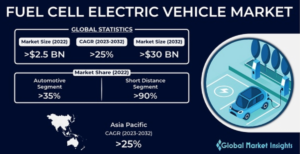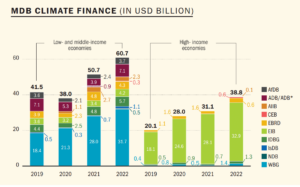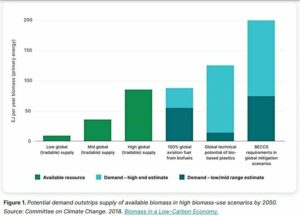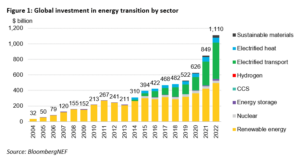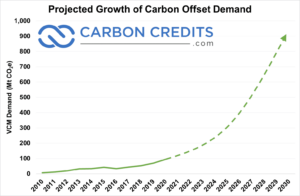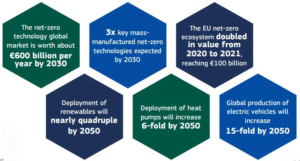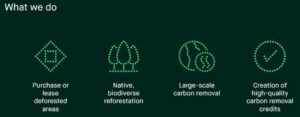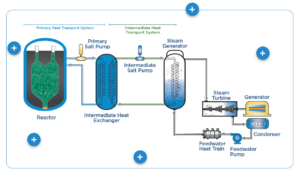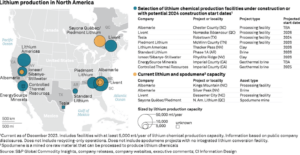The United States revealed major successes in nuclear energy in 2023 while aiming to reach zero net emissions by 2050.
The country achieved significant milestones like approving its first small modular reactor design, showing that the nation is gaining confidence and momentum in the field of nuclear energy. Here are the 5 big achievements that the U.S. aims to build on for more progress this 2024.
Enabling Advanced Reactor Licensing
The U.S. Nuclear Regulatory Commission (NRC) finalized its rule to certify NuScale Power’s 50-megawatt power module. This achievement was possible due to licensing efforts supported by industry awards in collaboration with the Department of Energy (DOE).
NuScale’s advanced light-water system marks the first certified small modular reactor (SMR) by the NRC. And it’s only the 7th reactor design approved for use in the country. This milestone will serve as a blueprint for other SMRs currently being developed, enabling them to advance their technologies.
The NRC also recently granted approval for the construction of Kairos Power’s Hermes reactor in Tennessee, potentially starting in 2026.
Kairos Power Reactor
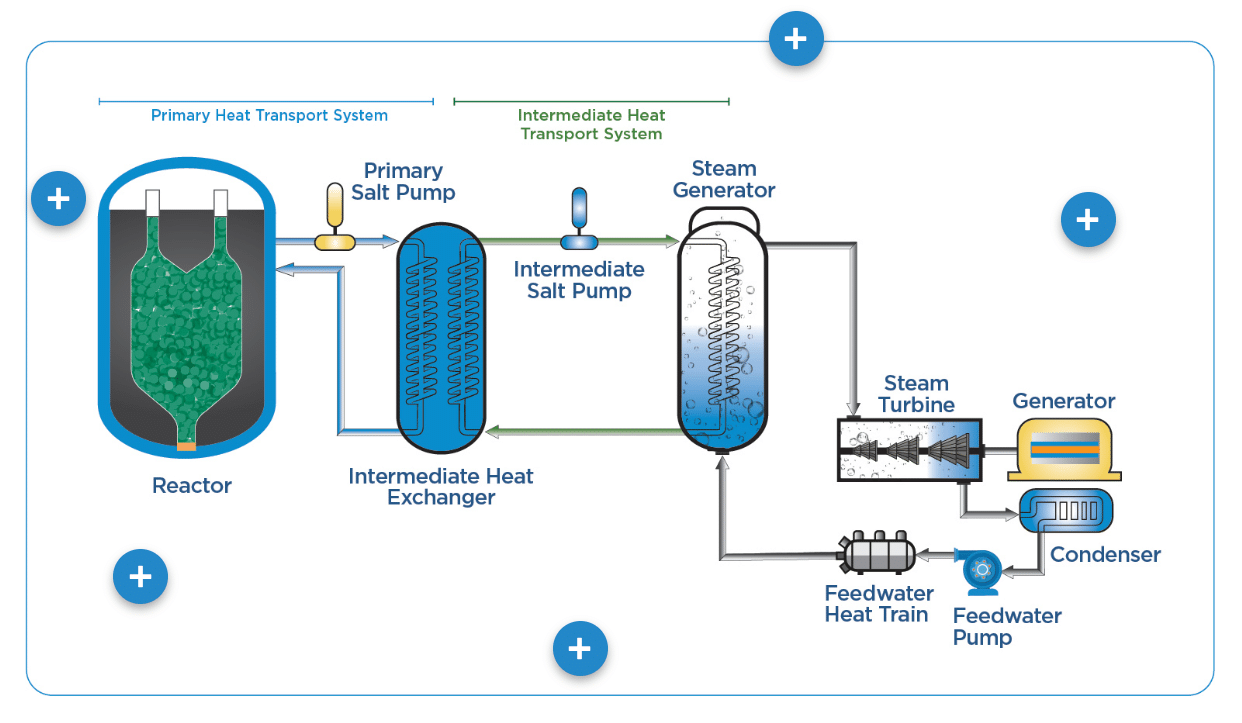
 Hermes is among the new reactor technologies supported by the DOE’s Advanced Reactor Demonstration Program (ARDP). This reactor is the first of Generation IV to receive a construction permit from the NRC. It will contribute to the development of Kairos Power’s commercial reactor employing fluoride salt-cooled high-temperature technology.
Hermes is among the new reactor technologies supported by the DOE’s Advanced Reactor Demonstration Program (ARDP). This reactor is the first of Generation IV to receive a construction permit from the NRC. It will contribute to the development of Kairos Power’s commercial reactor employing fluoride salt-cooled high-temperature technology.
Promoting Clean Hydrogen Production
The DOE supported the installation of a low-temperature electrolysis system, which aids in cooling the power plant. The station, Nine Mile Point Nuclear Station, is operated by Constellation which initiated the clean hydrogen production in New York.
This project is one of three supported by the DOE, demonstrating how nuclear power plants can assist in reducing costs and scaling up clean hydrogen production. Other projects aiming to start generating hydrogen this year would be at the Davis-Besse (Ohio) and Prairie Island (Minnesota) plants.
Notably, the DOE also announced $7 billion in funding to establish 7 regional clean hydrogen hubs across the U.S. These hubs can potentially reduce 25 million metric tons of CO2 emissions each year from various uses. Three of these hubs, namely the Mid-Atlantic, Midwest, and Heartland regions, will incorporate nuclear energy as a component of their projects to produce clean hydrogen.
Creating Fuels for Future Reactors
High-assay low-enriched uranium, or HALEU is a crucial material required for many advanced reactor designs. A 20-kg HALEU was first produced by the Centrus Energy Corporation, the first of its kind in over 70 years. It also marked a key achievement in the DOE’s HALEU Demonstration project in Piketon, Ohio.
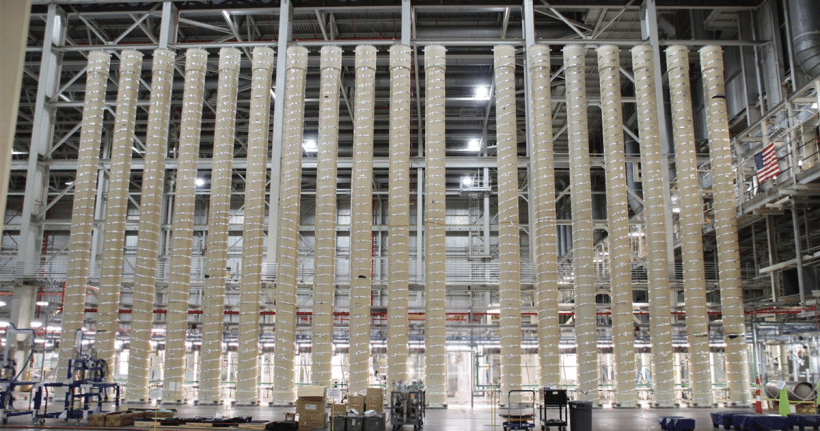

The HALEU material will be used for fueling the initial cores of DOE’s two demonstration reactors granted under the ARDP. Additionally, it will support fuel qualification and other testing of new reactor designs. Centrus plans to increase its HALEU material production to a rate of 900 kilograms per year starting in 2024.
DOE issued its initial request for proposals to award contracts for deconverting HALEU uranium hexafluoride into chemical forms suitable for creating fuels for advanced reactor developers. This year, the agency will issue another proposal seeking contracts for acquiring, storing, and transporting enriched uranium hexafluoride, with financial backing from the Inflation Reduction Act.
Upgrading and Expanding Testing Capabilities
The Idaho National Laboratory (INL) has implemented various improvements to its TREAT (Transient Reactor Test Facility) reactor to facilitate advancements in nuclear energy. One such upgrade involved developing a specialized capsule for conducting transient testing on fast reactor fuels. This effort was part of a collaborative project between the United States and Japan.
In 2024, the countries will conduct tests on certain fuels at TREAT, which haven’t been conducted for over 2 decades.
Additionally, INL initiated construction on the NRIC DOME, recognized as the world’s first microreactor test bed. This test bed is to support the creation and authorization of new reactor technologies. INL is repurposing its EBR-II containment structure, reducing the financial risks associated with developing small reactor systems.
The National Reactor Innovation Center (NRIC) will manage the facility, with testing expected to begin as early as 2026.
Recognition in International Cooperation
More remarkably, nuclear energy achieved notable recognition on the global platform. It secured its place in the final COP28 agreement in Dubai to expedite its utilization.
During COP28, the United States, along with numerous allied nations, made significant commitments. These included pledges to triple worldwide nuclear capacity by 2050 and to mobilize over $4.2 billion in government-led investments. The objective is to establish a global commercial nuclear fuel market that operates independently from Russian influence.
The U.S. also organized its inaugural U.S-African Nuclear Energy Summit in Ghana. The aim is to establish a framework for sustainable growth of nuclear energy in the said region. Additionally, the DOE unveiled plans to build a clean energy training center in Ghana.
Furthermore, DOE launched a virtual training initiative designed to assist nations in exploring nuclear energy as a means to bolster their economic development, energy security, and environmental goals.
Read the other big wins announced by the Office of Nuclear Energy here.
The year 2023 has been a landmark year for the United States in advancing its nuclear energy initiatives. With those achievements, the U.S. has poised itself to continue this momentum into 2024, capitalizing on technological advancements and strategic partnerships to lead the way in clean and efficient nuclear energy solutions.
- SEO Powered Content & PR Distribution. Get Amplified Today.
- PlatoData.Network Vertical Generative Ai. Empower Yourself. Access Here.
- PlatoAiStream. Web3 Intelligence. Knowledge Amplified. Access Here.
- PlatoESG. Carbon, CleanTech, Energy, Environment, Solar, Waste Management. Access Here.
- PlatoHealth. Biotech and Clinical Trials Intelligence. Access Here.
- Source: https://carboncredits.com/how-nuclear-energy-in-the-u-s-got-its-groove-back-poised-to-soar-in-2024/
- :has
- :is
- $UP
- 2023
- 2024
- 2026
- 2050
- 25
- 7
- 70
- 7th
- 820
- a
- achieved
- achievement
- achievements
- acquiring
- across
- Additionally
- advance
- advanced
- advancements
- advancing
- agency
- Agreement
- aids
- aim
- Aiming
- aims
- along
- also
- among
- and
- announced
- Another
- approval
- approved
- ARE
- AS
- assist
- associated
- At
- authorization
- award
- awards
- back
- backing
- BE
- been
- begin
- being
- between
- Big
- Billion
- blueprint
- bolster
- build
- by
- CAN
- Capacity
- capitalizing
- Center
- certain
- Certified
- certify
- chemical
- clean
- clean energy
- collaboration
- collaborative
- commercial
- commission
- commitments
- component
- Conduct
- conducted
- conducting
- confidence
- construction
- Containment
- continue
- contracts
- contribute
- cop28
- CORPORATION
- Costs
- countries
- country
- Creating
- creation
- crucial
- Currently
- data
- decades
- demonstrating
- Department
- Department of Energy
- Department Of Energy (DOE)
- Design
- designed
- designs
- developed
- developers
- developing
- Development
- DOE
- Dubai
- due
- each
- Early
- Economic
- Economic Development
- efficient
- effort
- efforts
- Emissions
- employing
- enabling
- energy
- enriched
- environmental
- establish
- expanding
- expected
- expedite
- Exploring
- facilitate
- Facility
- FAST
- field
- final
- finalized
- financial
- First
- For
- forms
- Framework
- from
- Fuel
- fuels
- funding
- future
- gaining
- generating
- generation
- Ghana
- Global
- Goals
- got
- granted
- Growth
- Heartland
- here
- hermes
- How
- http
- HTTPS
- Hubs
- hydrogen
- implemented
- improvements
- in
- Inaugural
- included
- incorporate
- Increase
- independently
- industry
- influence
- initial
- initiated
- Initiative
- initiatives
- Innovation
- installation
- International
- into
- Investments
- involved
- island
- issue
- Issued
- IT
- ITS
- itself
- Japan
- Key
- Kind
- laboratory
- landmark
- launched
- lead
- Licensing
- like
- made
- major
- manage
- many
- marked
- Market
- material
- max-width
- means
- metric
- midwest
- milestone
- Milestones
- million
- minnesota
- mobilize
- modular
- module
- Momentum
- more
- namely
- nation
- National
- Nations
- net
- New
- New York
- nine
- notable
- nuclear
- Nuclear Energy
- Nuclear power
- numerous
- objective
- of
- Ohio
- on
- ONE
- only
- operated
- operates
- or
- Organized
- Other
- over
- part
- partnerships
- per
- Place
- plans
- plant
- plants
- platform
- plato
- Plato Data Intelligence
- PlatoData
- Point
- poised
- possible
- potentially
- power
- power plants
- produce
- Produced
- Production
- Program
- Progress
- project
- projects
- proposal
- Proposals
- qualification
- Rate
- reach
- reactor
- receive
- recently
- recognition
- recognized
- reduce
- reducing
- reduction
- region
- regional
- regions
- regulatory
- request
- required
- Revealed
- risks
- Rule
- russian
- s
- Said
- scaling
- Secured
- security
- seeking
- serve
- showing
- significant
- small
- specialized
- start
- Starting
- States
- station
- Strategic
- Strategic Partnerships
- structure
- successes
- such
- suitable
- Summit
- support
- Supported
- sustainable
- Sustainable Growth
- system
- Systems
- technological
- Technologies
- Technology
- tennessee
- test
- Testing
- tests
- that
- The
- their
- Them
- These
- this
- this year
- those
- three
- to
- tons
- Training
- transporting
- treat
- Triple
- two
- u.s.
- under
- United
- United States
- unveiled
- upgrade
- use
- used
- uses
- various
- Virtual
- W3
- was
- Way..
- webp
- which
- while
- will
- Wins
- with
- world’s
- worldwide
- would
- year
- years
- york
- zephyrnet
- zero

